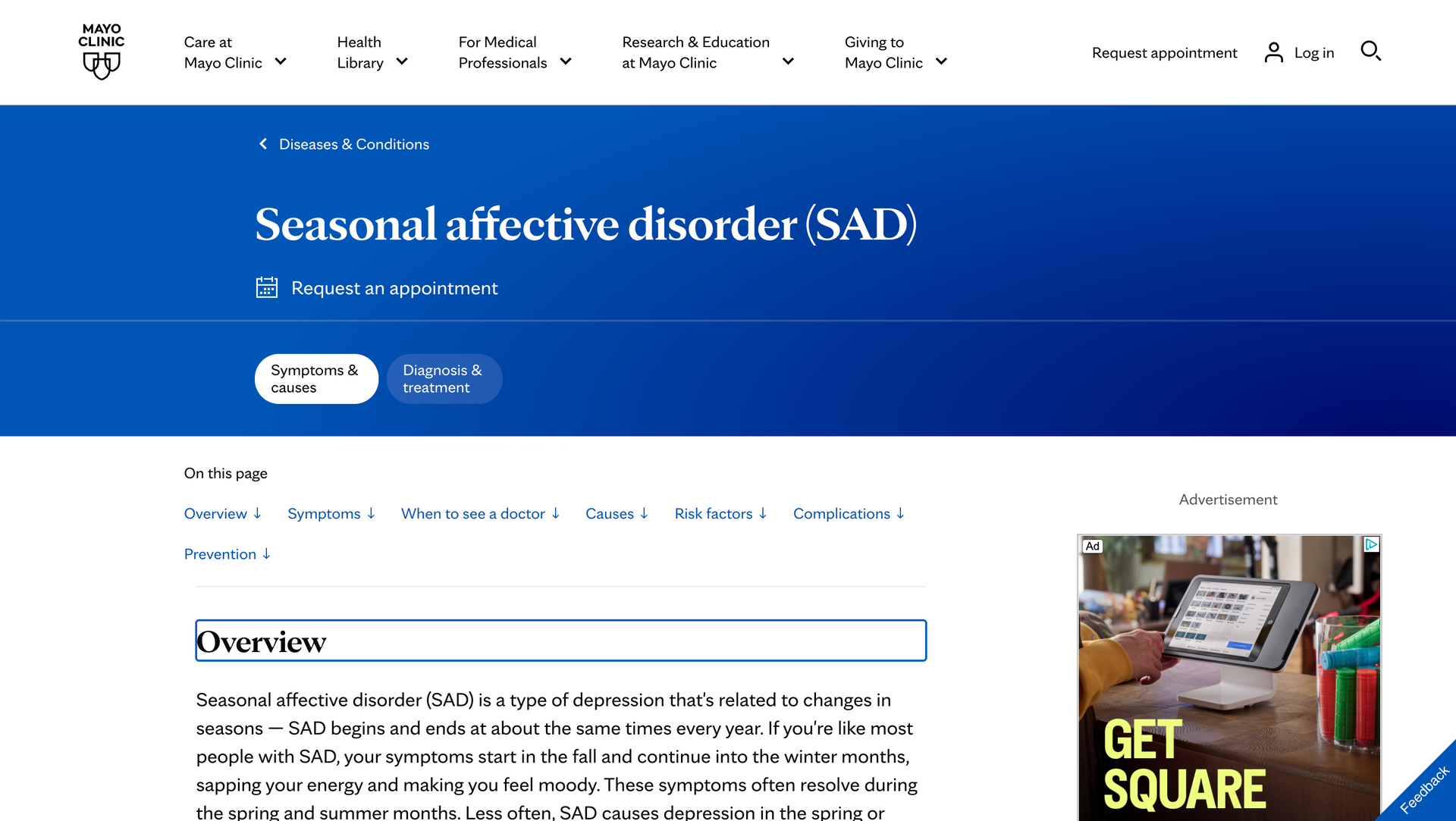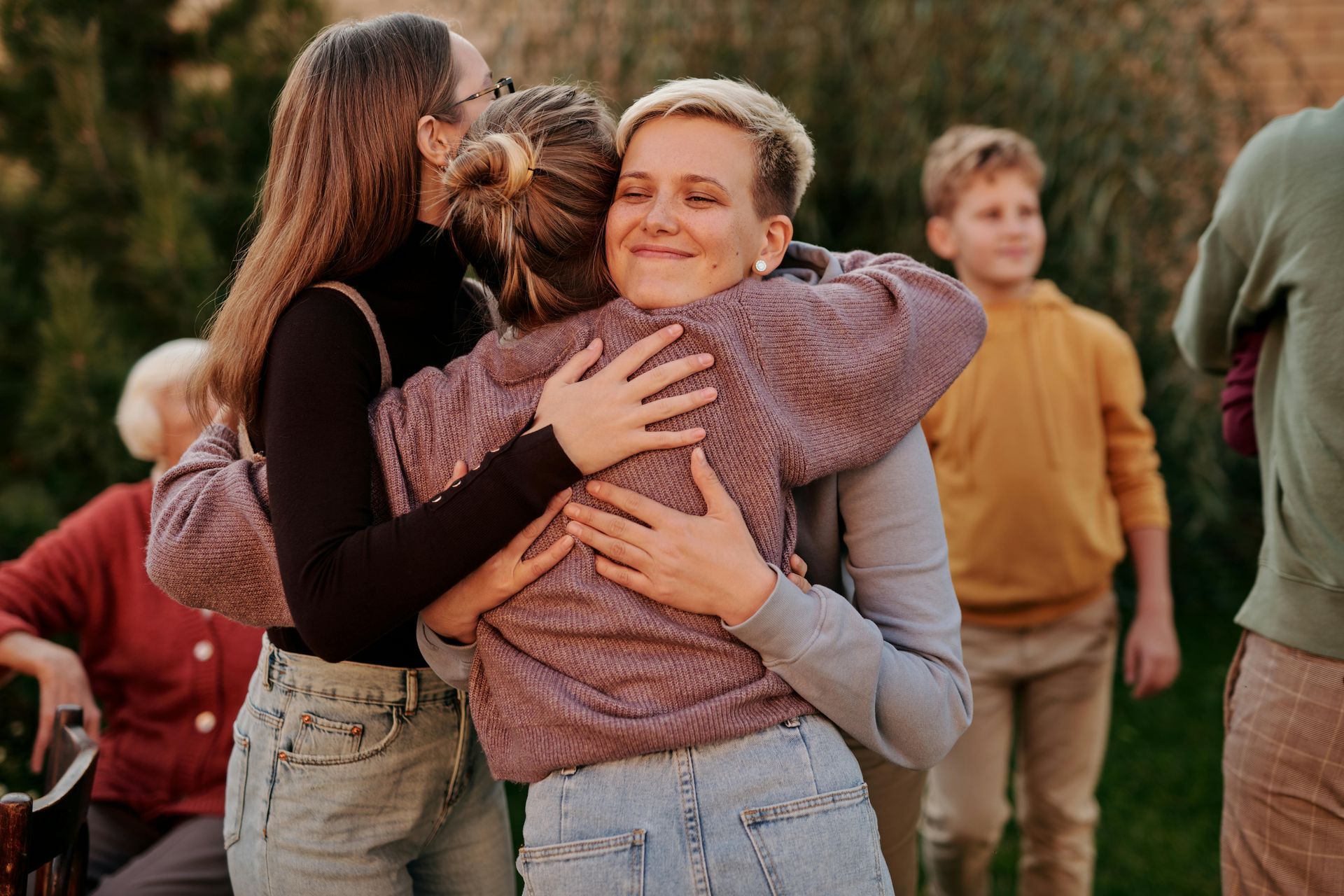Seasonal Affective Disorder (SAD): Supporting Loved Ones as Days Get Shorter
As daylight hours shrink and temperatures drop, many people notice a change in mood or motivation. For some, this shift is mild. For others, it’s something deeper known as Seasonal Affective Disorder (SAD).
While SAD is often dismissed as the “winter blues,” it’s a real form of depression that follows a seasonal pattern. Understanding the signs and knowing how to offer support can make a world of difference, especially for those already managing caregiving responsibilities.
What Is Seasonal Affective Disorder?
Seasonal Affective Disorder is a type of depression that typically begins in late fall or early winter and fades as spring returns. It’s believed to be linked to reduced exposure to natural sunlight, which can disrupt the body’s internal clock and lower serotonin levels.
Common signs include:
- Persistent sadness or low mood
- Fatigue and low energy
- Loss of interest in activities once enjoyed
- Changes in sleep or appetite
- Difficulty concentrating
- Withdrawal from friends or family
SAD can affect anyone, but it’s more common in adults living in northern regions with long winters. For caregivers, recognizing these symptoms early in both themselves and in loved ones is key to managing them before they grow more severe.
How to Support Someone Experiencing SAD
1. Encourage natural light exposure.
Even brief moments outside can help. Suggest short daily walks, or open blinds and curtains during daylight hours to let in as much sunlight as possible. If natural light is limited, light therapy lamps can be a useful tool. Many people find they lift mood and energy when used consistently in the morning.
2. Create connection and structure.
Isolation can deepen symptoms. Invite loved ones to join you for simple, low-pressure activities like a shared puzzle, a walk through the neighborhood, or a short phone call. Maintaining routine and social contact helps anchor emotional well-being.
3. Support healthy routines.
Regular sleep, nutritious meals, and physical movement stabilize both mood and energy levels. Encourage consistency rather than perfection. If your loved one struggles with motivation, try pairing activities with something enjoyable, such as listening to a favorite song while cooking or walking together after a warm drink.
4. Discuss professional help openly.
If symptoms persist or interfere with daily life, professional support can be transformative. Encourage reaching out to a mental health counselor or primary care provider to discuss options such as therapy, medication, or light-based treatments. Let your loved one know seeking help is a sign of strength, not weakness.
5. Make the environment warm and welcoming.
Our surroundings have a powerful influence on our mental state. Add small touches of comfort such as warm lighting, cozy blankets, calming scents, or photos that spark joy. Sometimes, feeling “at home” in a space can help the mind feel at ease.
Self-Care for Caregivers
Caregivers are especially vulnerable to emotional exhaustion in winter months. The shorter days often mean less sunlight and outdoor activity, which can quietly chip away at motivation and energy.
If you’re caring for someone else, it’s important to treat your own well-being as a daily necessity. Try to:
- Schedule small breaks throughout the day to rest your mind.
- Spend time outside, even for a few minutes.
- Eat balanced meals that include mood-supporting foods like leafy greens, citrus fruits, nuts, and whole grains.
- Connect with someone you trust to share how you’re feeling.
Remember: taking care of yourself doesn’t take away from your role as a caregiver. It strengthens it. You can’t pour from an empty cup, and tending to your own needs helps you show up with greater patience and compassion.
When to Seek Help
If you or someone you care for shows ongoing signs of depression, loss of interest in daily life, or thoughts of hopelessness, reach out for help as soon as possible. Seasonal depression is treatable. Support can come from a variety of places. Local counseling centers, telehealth options, or community mental health resources.
Encouraging conversation and breaking the stigma surrounding mental health can be the first step toward recovery.
Bringing Light into Darker Months
SAD reminds us how deeply our environment affects our mental and emotional health. By creating intentional moments of light, both literally and figuratively, we can help ourselves and our loved ones navigate the season with more hope and compassion.
You don’t need grand solutions to make a difference. Sometimes, opening the curtains, sharing a kind word, or making time to check in on someone you love can brighten their world. Small steps create powerful change.
If you or someone you know may be struggling with SAD, know that support is available. Reach out to a trusted friend, counselor, or community resource. You’re not alone, and brighter days are ahead.
Looking for more simple, supportive tools for the loved ones in your care? Enjoy these additional resources and explore our blog for ideas that help you nurture connection, one moment at a time. Or, Join our mailing list where we share more resources that accompany our blog posts.
Join Our Mailing List












